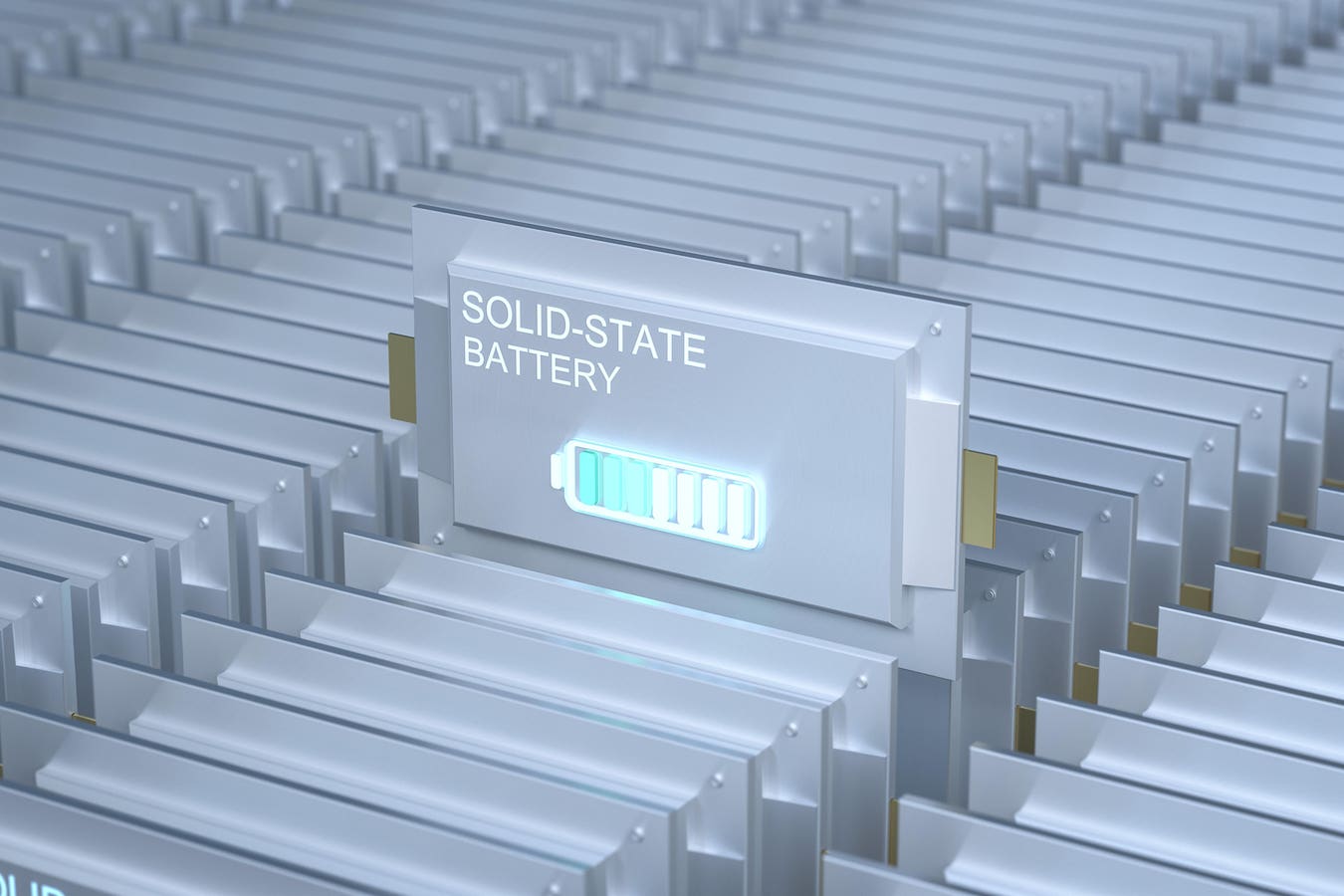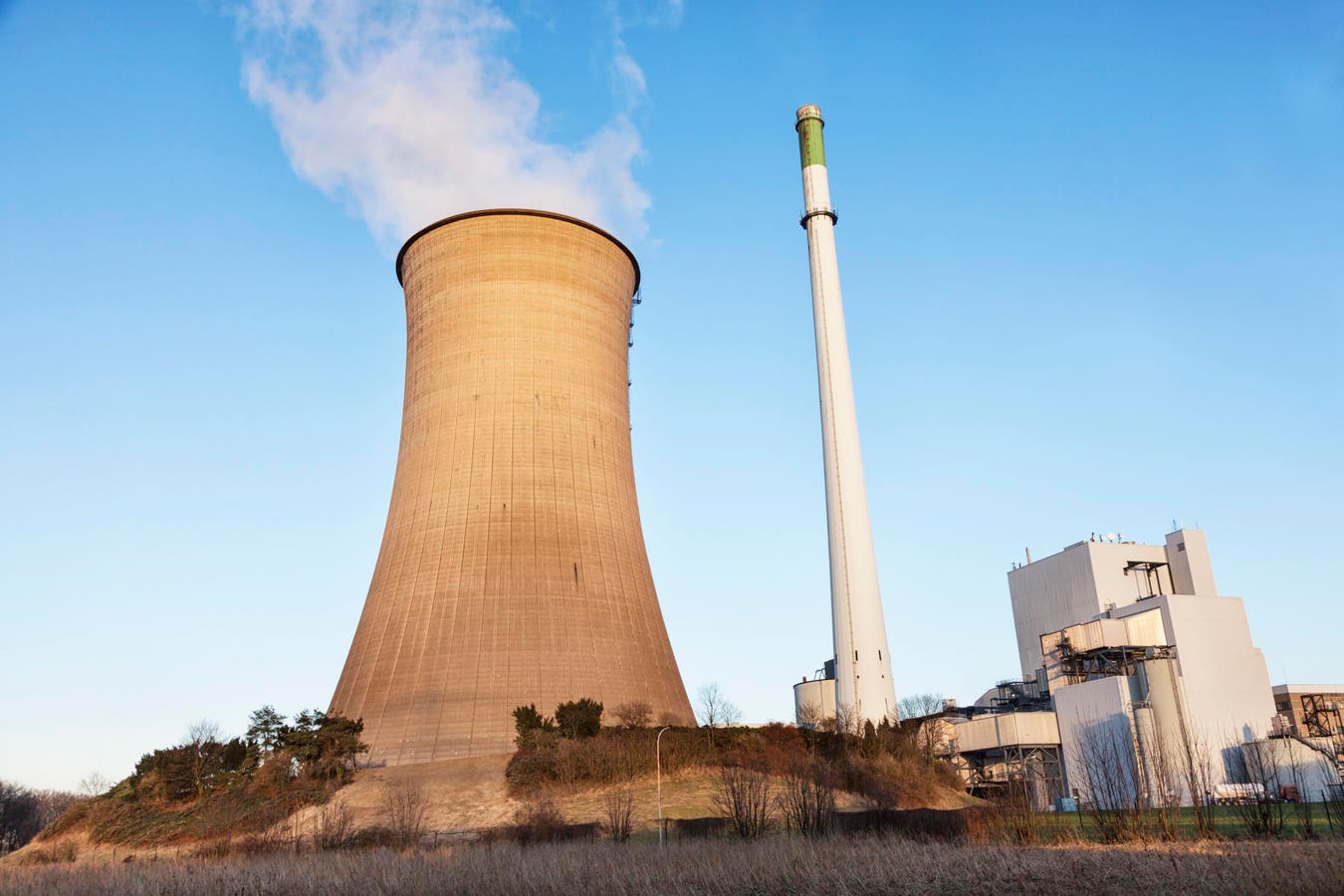3d rendering group of solid-state or rechargeable batteries
Solid-state batteries have been hailed as a game-changer for electric vehicles — always five years away, but never quite arriving.
Solid-state champions say the technology, if perfected, would slash EV prices and weight, and maybe double range. Government subsidies wouldn’t be required to sell them. Buyers would be infatuated.
The trouble is the technology remains on the drawing board. Some experts say a breakthrough is imminent. Others point to problems said to be intractable.
Because the prize is so tempting – an EV that can match and beat internal combustion engine’s all-around utility – the world’s leading automakers and the Chinese state are investing massively. These next-generation batteries seek to use solid electrodes and a solid electrolyte, replacing the liquid or gel electrolytes found in conventional lithium-ion batteries.
The consensus opinion is that success is one last heave away. You can exclude Donald Sadoway, Professor of Materials Chemistry at the Massachusetts Institute of Technology, from the consensus. Sadoway, in an interview, said not only is the technology incomplete, the ability to produce at scale remains elusive.
The current lithium-ion battery technology, which has moved on from nickel-based chemistry to lithium-iron phosphate (LFP), will have to suffice for a while yet, he says. LFP batteries are cheaper with lower energy density providing less but acceptable range than nickel-based batteries. Nickel batteries will still be needed for more expensive cars which require longer range.
Cambridge, England-based technology consultants IDTechEX’s vice president for research Dr James Edmondson thinks progress is being made and points out solid-state batteries are not a single technology but encompass various strategies with the ultimate goal of removing the liquid electrolyte and replacing it with a solid one. Some solid-state batteries that already exist have small liquid components.
Late in the decade
Edmondson expects to see prototypes of truly solid-state batteries between now and 2028 with premium vehicles the first adopters late in the decade.
“In terms of seeing them in larger production volume vehicles we wouldn’t expect that until the 2030s. Even by 2035, we are predicting just over 100GWH of capacity for solid-state batteries, compared with our prediction for the overall EV car market at around 3,800GWH in the same year,” he said in an email exchange.
solid-state batteries have the potential to revolutionize the battery industry by offering improved … More
Will they live up to the promise of half the price, half the weight and twice the power?
“Solid state batteries will inherently start at a high cost due to their much less scaled manufacturing. Average cell cost for typical (lithium-ion) was around 80$/kWh in 2024, and we wouldn’t expect solid state to match this until the late 2020s. Half the price would be a long way off, and maybe not possible, especially as lithium-ion is still decreasing, you eventually run into a base bill of material costs,” Edmondson said.
“Energy density for solid state certainly has the potential to be higher than the typical Li-ion. We would expect solid state cells to be able to achieve about 900Wh/L whereas the average high nickel NMC is around 400Wh/L,” he said.
Packaging the cells is complicated.
“Overall, solid state should still be able to achieve a significantly higher energy density, but it won’t be as straightforward as having cells that contain twice as much energy means a pack with twice as much energy,” Edmondson said.
This is premature though, according to MIT’s Sadoway, saying fundamental technical barriers remain.
“Solid-state technology is still in the research and development stage and I don’t see anything in the market coming close to the finished product,” Sadoway said.
Fundamental physical barriers
Eliminating the liquid element is proving to be an elusive problem.
“We don’t see anything coming into the market-place because of fundamental physical barriers, not any time soon. That’s my assumption. I’m prepared to be surprised but I don’t see how you can have all the key elements as solid. It really looks too difficult at the moment to overcome these barriers and if you do, there’s the ability to manufacture. So there’s a scientific problem and a manufacturing (at scale) problem,” Sadoway said.
Sadoway has for years pointed out basic problems developing solid-state technology haven’t been solved. Sadoway has been working on an aluminum-sulfur battery, which he has said would be cheaper at scale and safer than lithium-ion because it was incapable of burning. The project has stalled for lack of funds.
Dr Timothy Gotsick, VP of Technology & Innovation at MacDermid Enthone Industrial Solutions, said today’s batteries are already highly effective and efficient.
“It’s easy to imagine even greater energy storage. By replacing lithium ions and liquid electrolytes, which are like using a basket-ball sized sponge to hold a cup of water, with lithium metal, you could pack the same energy into something the size of a tennis ball. The theoretical ratio of energy density between a graphite node and lithium metal is a little over 10. That is the basic principle behind a solid-state battery,” Gotsick said.
Propel EV beyond ICE cars
“The implications are enormous if this technology can be realized. EVs are already capturing significant market share. With maximum energy density, enhanced safety, and faster charging, nearly all objections to EV adoption would be eliminated. In fact, such advancements could propel electric vehicles beyond the capabilities of today’s ICE cars,” Gotsick said.
Solid-state battery technology, the next frontier in energy storage, mind map infographics sketch.
“Of course if it were easy, it would already be done. But with stakes this high, many are racing to make it happen,” he said.
Gotsick pointed to the leading invetors in solid-state research –
- China invested $840 million in solid-state battery research in 2024.
- VW’s affiliate QuantumScape hasn’t produced a commercial battery yet but is quoted on the New York Stock Exchange and is worth around $4 billion.
- Toyota has spent $13.4 billion on advanced battery research, with solid-state being a primary focus.
Gotsick thinks the emergence of solid-state batteries can be measured in years, not decades.
“The change, when it comes, may look sudden. Due to the modular nature of EVs, it will probably be very easy to swap a smaller battery and its control systems into automotive designs. As a result, as soon as solid-state batteries are viable, they will see rapid adoption,” he said.
IDTechEx’s Edmondson believes solid-state promise a lot but still have hurdles to jump.
Li-ion will maintain market majority
“We would expect production cars with solid-state batteries to be on the roads before the 2030s, but not in much larger production vehicles until the 2030s and even then, traditional Li-ion will still likely maintain the majority of the market share,” Edmondson said.
In Europe, politicians have decreed that no new ICE vehicles will be sold after 2035. Forecasts show that is very unlikely with current technology. Rapid introduction of solid-state would transform EV sales.
In the U.S., the Trump Administration dropped the plan to force at least half of U.S. new sedan and SUV sales by 2030 to be EVs. That’s just as well because MIT’s Sadoway says by 2035 in the U.S., ICE, hybrid and EV sales will be roughly the equivalent of today, but another problem will be demanding attention – the electric grid.
“Yes, in 2035 the U.S. the automobile market will be roughly the same as today, but by then the massive demand for electricity from computers, AI and EVs will combine to demand more electricity than the grid can supply,” Sadoway said.
Rapid solid-state rollout clearly won’t solve all the problems for EVs.









